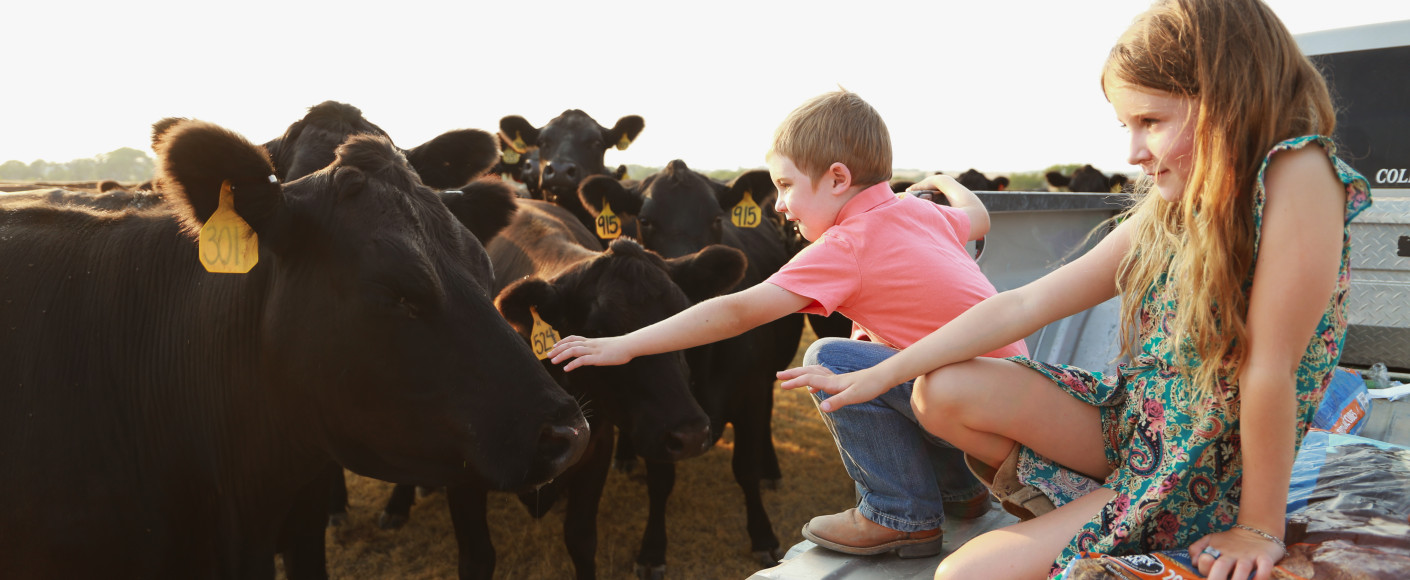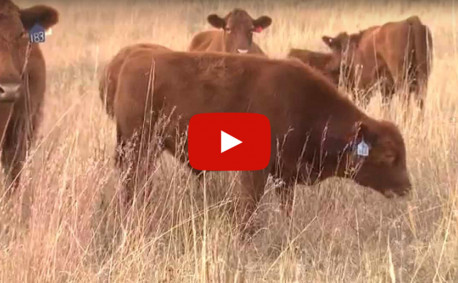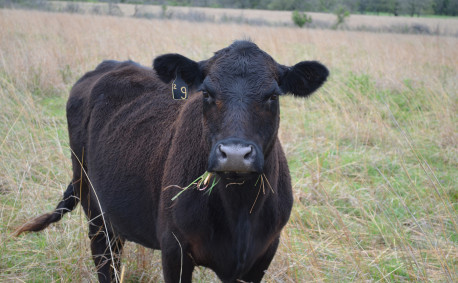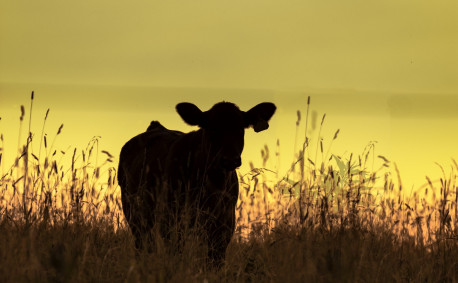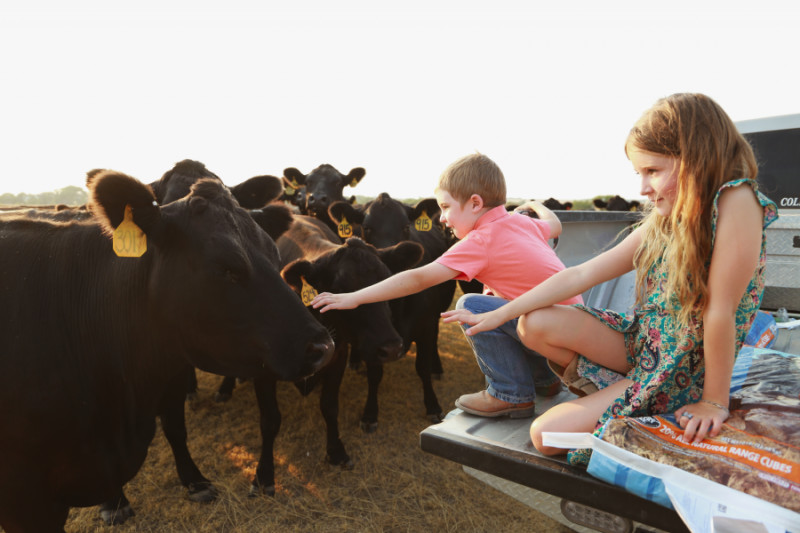What Do Cattle Eat
One cool thing about cattle is they can eat what many other animals can’t, which is important because not all land can grow food that’s suitable for humans. The Midwest is a great example. Our soil is suited to grow a variety of grasses and grains, which form our unique ecosystem, but our stomachs can’t digest those plants. As luck would have it, those plants make perfect food for cattle. They can convert that otherwise inedible (to us) food to a nutritious (and delicious) source of protein we can digest. For that reason, they’re sometimes called nature’s great recyclers.
So, what, exactly do cattle eat?
It all depends on where they are in their stage of life. Animals have different needs at different times. Just like humans adjust from eating milk to baby food to recipes galore, the diet for cattle changes as they grow. Having a variety of food sources ensures they get a good variety of nutrients.
Beef Cattle
The typical lifespan for livestock is about two to three years, during which time they grow to about 1,200 to 1,400 pounds.
Most beef cattle eat a combination of grasses and grains, all of which play an important nutritional role. Here’s how it breaks down:
Grass
After birth, calves are typically raised on their mothers’ milk. They also learn to graze on fresh grass alongside their mothers and fellow calves for about six months. Then, ranchers introduce them bit by bit to other food. This is called the backgrounding phase.
Ranchers often start with hay, since that’s closest to the fresh grasses the calves are used to. Fresh grass has a higher nutrient content than hay, but isn’t always available. Hay is a great way to preserve as much of the nutritional value of plants as possible. Another way to extend the life of that food source is to make silage. Silage is grass and other organic matter that is fermented to preserve nutrients for later use.
Fun fact: One digestive compartment in cattle, called the rumen, ferments foods. Since silage is already fermented, it can be easier for cattle to digest.
Grain
Depending on the time of year and availability of grasses, ranchers may also feed their cattle grains like field corn, sorghum, barley and oats. They may also incorporate cottonseed and dried distillers grains.
Fun fact: Distillers grains are byproducts of ethanol production and even brewing alcohol, which can use Kansas-grown sorghum and corn. Rather than going to waste, these spent grains make a nutritious addition to cattle feed.
For some cattle, this dietary transition often coincides with their transition to a feed yard for finishing. Finishing happens after the cattle are about a year old. At the feed yard (also called a feedlot), the variety of food sources helps bring cattle up to the target weight for harvesting. The grains also help add ribbons of fat to the meat — called marbling — which contribute to the rich taste of the beef. Some ranchers, like the Kohmans, raise their cattle through every life stage, rather than sending them to a feed yard.
Feed
Some ranchers will turn to commercial feed that is made up of these and other ingredients like vitamins as supplements. These products have specially formulated macronutrient content — think protein and carbohydrates for energy and fiber — for optimal health.
Some ranchers grass-feed their cattle for their entire lives. Some finish with grain diets. (Check out our handy breakdown of grass versus grain feeding and finishing.) Many of them turn to their fellow Kansas farmers to supply high-quality grains and grasses to help keep their cattle healthy.
What About Dairy Cows?
Dairy cows and beef cattle eat similar diets, but in different proportions. Both graze on fresh grass and eat hay. Like beef cattle, dairy cows also eat different types of foraged plants like corn and barley, as well as distillers grains. Dairy cows rely more on grasses and hay and are typically leaner than beef cattle.
More About Beef Production

